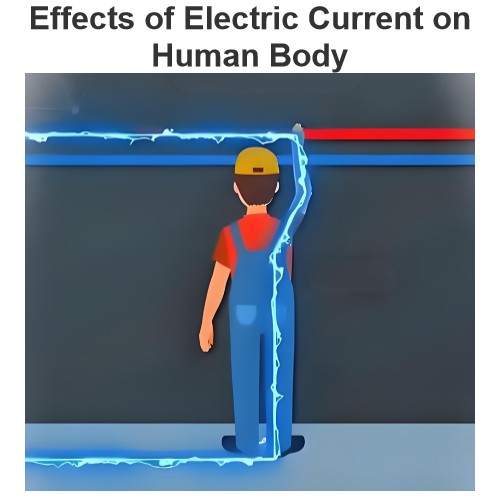How does electricity travel through our bodies?
1. The way electricity passes through the body
Direct contact
Conductive object contact: When the human body directly touches the charged conductor, the current will enter the human body through the contact point. For example, touching exposed wires, touching electrical equipment with leakage, etc. At this point, the current will enter the body from the contact point, and then through the various tissues and organs of the body, and finally flow to the earth or other grounded objects.
Humid environment increases electrical conductivity: In a humid environment, the skin resistance of the human body will be reduced, making it easier for current to pass through the body. For example, in wet places such as bathrooms and swimming pools, the likelihood of electric current passing through the body will be greatly increased when the human body touches an charged object. Because water is a good conductor, wet skin reduces the resistance between the body and conductive objects, increasing the risk of current passing through.
Induced current
Electromagnetic field induction: In the vicinity of a strong electromagnetic field, the human body may sense current. For example, under high-voltage power lines, around transformers and other places, although the human body is not directly in contact with charged objects, due to the role of electromagnetic fields, induction current will be generated inside the human body. The size of this induced current depends on factors such as the strength and frequency of the electromagnetic field and the relative position of the human body to the electromagnetic field.
Capacitive coupling: In some cases, the human body may sense current through capacitive coupling. For example, when the human body is near a capacitor with high voltage, an electric field is formed between the human body and the capacitor due to the action of the capacitor, which generates an induced current in the human body.
2. Methods to prevent damage caused by current
Insulation protection
Use insulation materials: When touching electrical equipment or performing electrical work, use insulation tools and protective supplies, such as insulation gloves, insulation shoes, and insulation MATS. These insulating materials can prevent the current from passing through the body, thus providing protection. For example, when carrying out maintenance operations, electricians must wear qualified insulation gloves and insulation shoes to prevent electric shock accidents.
Keep the electrical equipment well insulated: Check and maintain the insulation performance of the electrical equipment regularly to ensure that the shell and wires of the equipment are well insulated. If the insulation is damaged, it should be repaired or replaced in time. For example, check whether the insulation layer of the wire is damaged, aging and other phenomena, and the aging wire should be replaced in time to prevent leakage.
Ground protection
Equipment grounding: Grounding the metal shell of the electrical equipment can effectively prevent the occurrence of electric shock accidents. When the equipment leakage occurs, the current will flow into the ground through the ground wire, but not through the human body. For example, in the three-hole socket of household appliances, one of the holes is the ground hole, which connects the metal shell of the appliance with the earth through the ground wire to ensure safety.
Equal potential connection: In some special places, such as bathrooms, swimming pools, etc., equal potential connection should be carried out. Equipotential connection is the metal parts in the building, such as metal pipes, metal doors and Windows, metal bathtubs, etc., connected together by wires so that they are at the same potential. This can avoid electric shock caused by the formation of potential differences between different metal parts in the body when leakage occurs.
Install leakage protection device
Leakage protector: In household and industrial electricity, the installation of leakage protector is an effective way to prevent electric shock. The leakage protector can detect the leakage current in the line and quickly cut off the power supply when the leakage current reaches a certain value, thus protecting the human body from electric shock. For example, the leakage protector in the home is usually installed in the distribution box, and when the electrical equipment leaks, the leakage protector will cut off the power in a few milliseconds to protect the safety of the family.
Regular testing: Regularly test and maintain the leakage protector to ensure its normal operation. You can check whether the leakage protector can trip normally by pressing the test button on it. If the leakage protector is found to be faulty, replace it in time.
Safe electricity education
Improve safety awareness: strengthen the public's safe electricity education, improve people's safety awareness and self-protection ability. Understand electrical safety knowledge, master the correct method of electricity use, to avoid the occurrence of electric shock accidents caused by ignorance. For example, educate people not to touch electrified objects, not to use electrical appliances in humid environments, and not to disassemble electrical equipment without permission.
Children's safety education: In particular, children should be educated about the safety of electricity, so that they can understand the danger of electricity and stay away from electrical equipment. For example, tell children not to put their fingers or other objects in socket holes, and not to play with electrical switches.
The Electricity Encyclopedia is dedicated to accelerating the dissemination and application of electricity knowledge and adding impetus to the development and innovation of the electricity industry.













